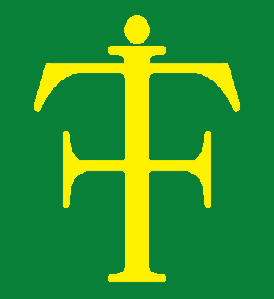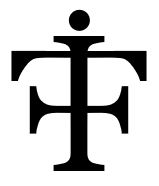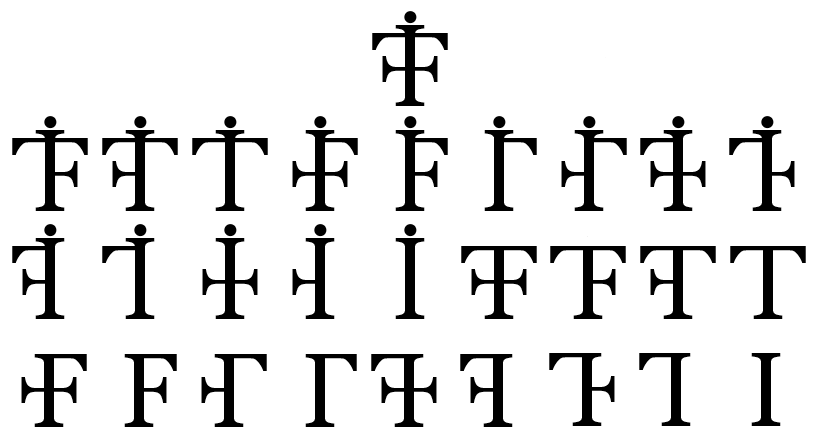Toronianism (Tor-ro-ni-an-ism)
Toronianism is a religion originating from the region of Capti and made popular by the Captirian Empire which spread it across most of sothern Ecoth and beyond. Today in Ecoth Toronianism is one of the largest religions on the continent and is practaced by millions of people.
Basic Beliefs
Toronianism is a mostly monotheistic religion where followers primaraly worship a God called Gipos. Gipos is said to be a being that dwells beyond the sothern shores of Capti, over the horizon where no sailer is ever able to venture. He is said to push the sun up from the water in the east and pull it back beneeth the waves in the west, hence allowning day and night.
Temples of Worship and Gicospid Squares
Worship of Gipos is carried out in four temples, the Crunis, Falowa, Tishcon and Balowas. Followers move between the temples depending on the time of day of the ceremony. Within a settlement such as city or town there are typically one of each type of temple each facing in four different directions. This is said to make up a Gicospid squere which connects each of the temples and their followers. The Crunis (Rising Temple) is used at sunrise and is always towards the east of a settlement. The Falowa (Peak Temple) is used at mid day and is always towards the north of a settlement. The Tishcon (Falling Temple) is used at sunset and is always towards the west of a settlement. The Balowas (Deep Temple) is only used by Tendands or on special occasions. Is is only used at midnight and is always towards the south of a settlement.
Larger settlements such as cities tend to have many Gicospid Squares within them so people do not have to walk a great distence between temples. Some mansions, castles and palices even have small private Gicospid Squares for ease of worship. The Gicospid Square reminds a Toronian that life is a cycle, much like day and night darkness may come but the sun will always rise again the next day.
Oral Tradition and Teachings
Toronians believe that recording written texts about Gipos is insulting to his power. If you write down the stories and teachings of Gipos instead of reciting them you do not fully memorise and therefore process and understand their contents. As a result of this very few Toronialist texts exist and their teachings are mostly passed down through families and services in temples. This puts emphasis on passing down generational teachings
Over time this allowed for varying naratives to emerge which ment that by -4800 there were many different sects of Toronialism with differing ideas on Gipos' teachings.
Ideas of 'Civilised' and 'Uncivilised' Peoples
One slightly more cotraversial idea in Toronianism is that of 'civilised' and 'uncivilised' peoples. According to holy knowledge there were two types of people in Ecoth. Those who were 'civilised' who lived in cities, towns and farms. These were the people who contributed to a wider society by paying taxes and trading goods. Those who were'uncivilised' lived in huts of mud or straw and worked in tribes. They did not contribute to any society beyond their own and in the eyes of early Toronianists were greedy selfish people.
If a group of 'uncivilised' peoples refused to commit to a wider society then the Toronianists were allowed to force them to submit through violence or outright murder. This was a practace common in the days of the Captirian Empire which would often use the fact their enemies were often native tribal peoples to justify wars such as the conquring of the Narch region in -5498.
Today many Toronianists reject the concept of 'civilised' and 'uncivilised' peoples, viewing it as a corupt and wrong idea of the past emphasised by the Captirian Empire to justify its genocides of native peoples in the lands it conqured however some extreemists do stick to the concept.
Common Stories
Whilst there are many different narratives between different sects of Torronianism due to the oral nature of teachings, there are some stories which are common or have similar versions across most sects of Torronianism
History of Literature
The li is the basis for the Captirian writing system becasue it was said that after Gipos created Ecoth and the life on it, he only gave the first humans a single rock inscripted with the symbol of the li.
The li has since become a symbol for Gipos and Torronianism, giving rise to the Captirian alphabet which is still used today in many areas. The symbol was even the official bannar of the Captirian Empire in its earlier days and towards its end in an attempt to bring back together the sects of Torronianism.
Early Writings
In Captirian society, those who were dominant with their left hand were considered as gifted by Gipos. Only they were allowed to write, especially within the context of religion. Middle and upper class children who were left handed were taken into the Order of the Left Hand, a division of the tendants who managed all religious matters within Zyglos. Within the order the children were taught how to write with the li and its alphabet.
The Captirian writing system is written from bottom to top but read from left to right, so the Order had to be taught both. Those who were not of the left hand only needed to be able to read left to right, as left handed scribes would write for them.
The order was open to men and women who would work together to create texts. Many members married within the order to garantee that their child would inharit the left handed trait, hence allowing it to also live a comfprtable life in the toronianist temples.
The most common work the Order of the Left Hand would produce in its earlier days were verni. These were long, fabric or parchment banners that were hung from the walls of cities or the towers of Torronian temples to remind people of certain stories. Each vern had a li at the very top, under which was usually a picture which summed up the message of the story. For the illiterate population who would already be familiar with the Torronianist stories through oral teachings, this is all they would need to recognise the story being told and message being convayed. Beneeth the image was often several lines of vertical text, read bottom to top. This is the only consistant example of bottom to top reading in early Captirian society.
Verni were often draped from tall public buildings and could be many meters long. The stories they depicted could not be about Gipos or his deeds, since that would be considered blasphamous. Instead, they were often moral stories or fables about regular people being taught valuble lessons by the error of their ways.
By the -5400s verni were mostly phased out, in an event refered to as the Oral Revolution. The Oral Revolution is a mysterious period of time where written records of Torronianism dry up and many old records such as verni appear to have been destroyed. Ecothnic historians still don't really know why but many theorise that a new Captirian Emperor's more Complex Toroniansit views might have put an end to the production of verni.
Expansion of Literature
As the Empire of Capti expanded rapidly after -5577 it came into contact with many new cultures such as the Vilx, Crani, Inlanders, Huvans, Selutes and Narch. This exposure to excessive amounts of new ideas and concepts propted one Captirian philosopher, Gariunui Doynous, to expand the Captirian alphabet. He standardised the existing letters, creating a set order in which they were to be expressed. He also doubled the number of letters which could be derived from the li, adding angles and curves to some thanks to newer writing technology.
The Doynoun Alphabet is still used by many Captirians today and was spread across the Empire as the standard for trade and communication to occur in. Its more flexible nature made it more favourable when dealing with a variety of cultures, which contained concepts that the original Captirian dialect had no way of expressing. Doynous' system revolutionised writing and is a key factor which allowed for Captirian expansion into foreign regions.
During this time the Order of the Left Hand moved away from writing religious and moral stories, to instead documenting Capti's success, mostly on the battlefield. A detachment of scribes would normally follow an army as they ventured into new lands, taking notes on the new cultures and mapping the area. It is thanks to these scribes that we know so much about the Captirian Empire in this period.
Huvan Writings
Around -5520, the Huvan Empire became the second major empire to adopt Toronianism. However, unlike Capti, they had not eveolved alongside the religion and so their writing sytem had no connection to the li. The isolation of the Huvans led to Huvan Toronianism developing very differently to Captirian Toronianism. The Huvans kept their old writing system, only adopting the li as a symbol of religion and not a letter. This different philosophy is one of the earliest differences to emerge between the two main sects of Toronianism.
Loss of Writings
As the Captirian Empire crumbled in the -4700s, breaking into many waring states, Xyanvic tribes migrated into the Inlands, bringing with them their own religion and culture. The most prominant of which, the Tevarites, ended up settling on the Shoronic coast, the original area from which many ancient Captirian traditions emerged. They were not Toronianist and heavily disliked the religion since its ideas clashed with their own. This resulted in many ancient Toronian buildings and texts being destroyed or burned.
The few verni which had survived the Oral Revolution and the test of time were either vandalised or hidden as the Tevars reined over the shoronic country.
One famous vern which is known to have been destroyed is Carass' Vern. The vern was said to tell the story of its authour, a left handed peasent boy who managed to find a way to a better life by joining the Order of the Left Hand. Whilst it is lost to history now, many other Captirian texts refer to it, allowing Carass' Vern to live on, even though it and its creator are now long gone.
The Split
Torronianism's ban on keeping written texts ment that the religion was always changing as stories were altered as they were passed down through the generations. This means that today Torronianism is the religion with the most recognised independent sects in Ecoth. Early Torronianism was fairly uniform as the Captirian Empire controled much of its narrative (with the exception of Huvan Toronianism) but between -4900 and -4800 new ideas began to emerge. A new sect of Toronianism began challenging the ideas of the Captirian Emperor and his court claiming that only Gipos' words were to be followed. Initially Discrete Toronianism was just another sect off of Traditional Captirian Toronianism and launched no meaningfull effort to challenge the Emperor's authority but as this group evolved they began to come up with new ideas.
Spreading quickly in the Narch region and the Inlands, Discrete Toronianism began to challenge the Captirians treatment of so called uncivilized peoples. This idea drew many of the Empire's oppressed and ancestrally tribal people to the sect growing its numbers dramatically outside the reach of the Captirian Emperor. The Discrete Toronianists also began to challenge the idea of the Gipospid Squeres, arguing that a formation of four rocks, as in pre-Captirian Toronianism, would be sufficient for rural and busy people to worship Gipos. Ideas like these were considered highly insulting by the Traditional Captirian Toronianists who were now becoming referred to as Complex Toronianists in opposition to the new sect.
Unfortunatly sources on early Discrete Toronianism are fairly scarce as the Captirian Empire tended to avoid writing about ideas that they thought negativly impacted the minds of their people and many early Discrete Torronianists were illitirate or did not have access to ink and paper.

Remove these ads. Join the Worldbuilders Guild











Comments